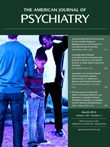At its October 2011 meeting, the APA Joint Reference Committee voted to approve as a Resource Document the report of the Work Group on Psychiatric Violence Risk Assessment. The Work Group had been charged with studying the changes in the context in which psychiatric risk assessments are conducted since the publication of the APA Task Force Report “Clinical Aspects of the Violent Individual” in 1974. The Work Group had further been charged with examining the ways in which risk is assessed, the accuracy that can be expected, and the ethics of risk assessment.
Violence risk assessment has assumed increased prominence during a time of significant changes in psychiatric practice. As the state hospital population declined from a peak of 550,000 in 1955, community mental health centers were often unprepared for the more impaired of the discharged patients. Many community services followed a “social service model” and had little capacity to provide comprehensive psychiatric evaluations. Limited access to hospitalization, a workforce with fewer doctors and nurses and fierce pressure to limit hospital stays all became critical features of a new risk assessment landscape.
Even when the risk of harm to others becomes a focus of the doctor's interaction with his or her patient, the principles underlying risk assessment are the same as those underlying psychiatric practice more generally. The evaluation is based on the results of taking a history and examining the patient's mental state. Accurate assessment depends on the availability of accurate information. Additional investigation, including psychological testing, may be required. In specialist areas, such as assessing the risk of sexual offending, it will often be appropriate to ask colleagues and specialist services to consult on a case.
Risk factors in general psychiatric settings and which relate to a patient's background include past behavior (arrests, young age at first arrest, and a history of violence or fire-setting), substance use, cruelty to animals, and risk-taking, including behavior which demonstrates impulsivity or a loss of control. Those that relate to a patient's present circumstances and mental state include youth, male gender, noncompliance with treatment, access to weapons, a provocative or otherwise unprotective home environment, lack of compassion or empathy, a stated intention to harm, and a lack of concern as to the consequences of acting violently.
In addition to looking for risk factors, however, psychiatrists assess risk by combining their understanding of the patient's personality, symptoms, and environment with their understanding of the likely causes of violence in each individual case. Structured risk assessment instruments may assist clinicians assessing the risk of their patient acting violently. The predictive validity of many of these instruments has now been established. Future research is required to establish the degree to which their use improves practice.
Assessing the risk of patient violence presents distinct ethical challenges. It requires clinicians simultaneously to take into account interests that sometimes conflict. These include encouraging patient autonomy and ensuring the safety of others. Particularly in legal settings, the task of showing proper respect for the person whose risk is being evaluated demands careful reflection. Specialist guidance is available from professional organizations. Predicting human behavior is in many respects difficult, and predicting violent behavior is not an exception to this rule. The criterion governing the adoption of new approaches to violence risk assessment in psychiatry should be the same as that governing the adoption of new approaches elsewhere in medicine: whether they benefit care.
The full Resource Document is available in a data supplement that accompanies the online edition of this APA Official Action (ajp.psychiatryonline.org).

